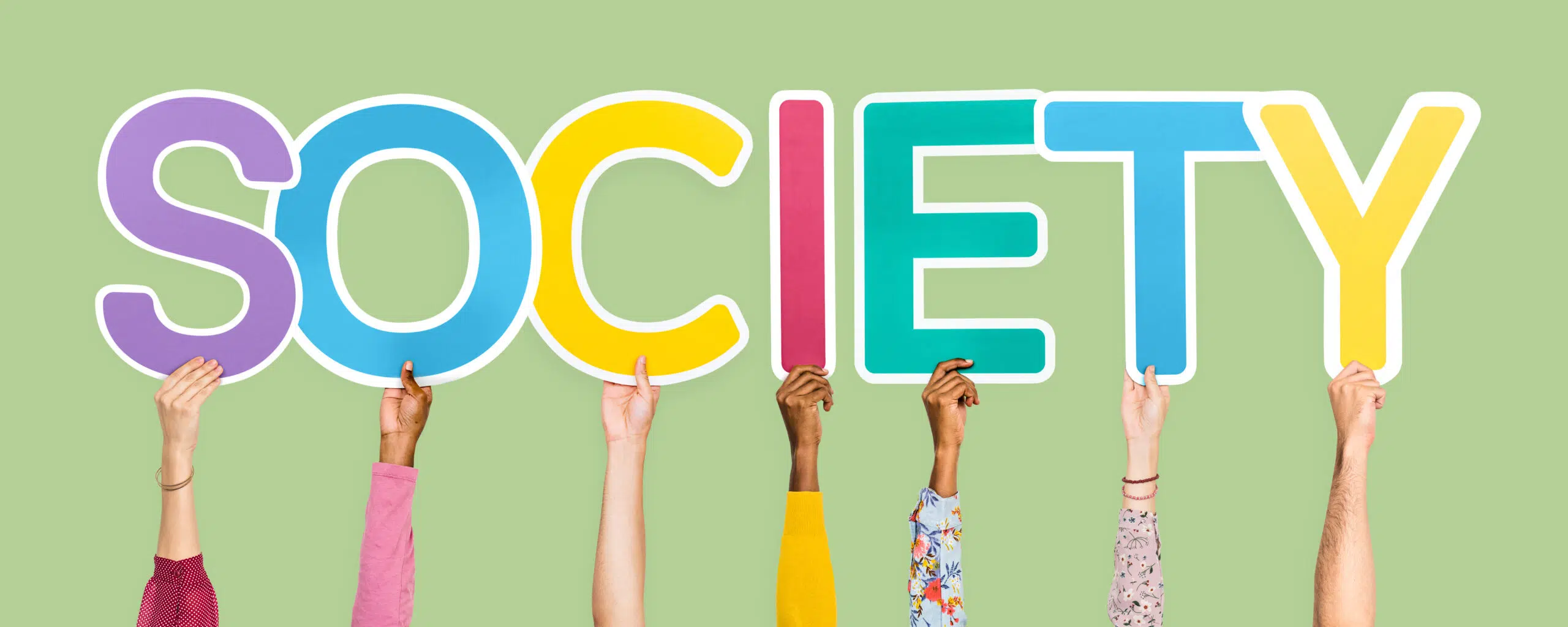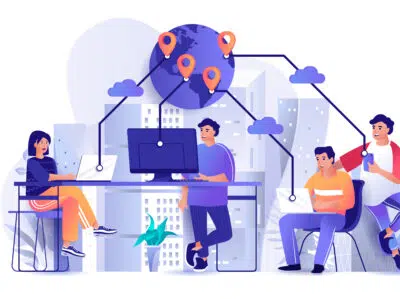How fostering diversity can elevate your employer brand and empower society

The unparalleled importance of recruiting leadership teams
February 21, 2023
How tech recruiters can build better employer branding
February 22, 2023
The ultimate goal of every business is to be profitable alongside meaningful engagement with all its stakeholders: employees, vendors and customers. Off late though, one additional aspect that most brands have trained their eyes on is being seen as enablers of social equity. Interestingly, meaningful engagement and social equity are intrinsically intertwined and business leaders today are aware of this. So, how do brands go about achieving these goals?
Meaningful employee engagement needs initiatives that appeal to millennials and GenZ, as greater numbers have already entered or are now poised to enter the workforce and your customer base. To engage stakeholders of these emerging demographics the key lies in brand messaging that appeals to all, across media channels. Needless to say, engaged employees then, are more productive and deliver better results. Customers too, purchase more from a brand when they relate to its messaging.
When a brand speaks to its every demographic, profitability becomes a given.
What, therefore, is the best way to put these initiatives into practice and by that ensure the critical aspect, social equity?
If statistics are to be believed, it appears that all three targets can be hit by a single arrow: DIVERSITY. This is why many industry leaders, especially talent acquisition leaders, are now waxing eloquent about workplace diversity at all forums.
Let’s therefore fully comprehend what diversity is.
Workplace Diversity ensures that the employee composition includes people of different ages, genders, races, sexual orientations, religions, backgrounds, and physical and/or mental abilities. You cannot achieve diversity without inclusion and equity, which is enmeshed in the acronym DEI (Diversity, Equity & Inclusion).
Inclusion ensures that each employee feels a sense of belongingness. It is incredible how inclusion can magnify your brand value. Equity guarantees fair and impartial treatment to every employee, irrespective of varying backgrounds.
So, what about Diversity, has made it a buzzword among leaders across all sectors and industries?
Let’s examine the business case for diversity.
How exactly is diversity good for your business?
- Diversity Fosters Innovation
The more-the merrier and the more homogenous the mix, the better the outcomes. When diverse people come together, it brings forth creativity and ideas that inspire. Creativity thrives amidst diversity which is clearly connected to innovation. Out-of-the-box and path-breaking ideas usually emerge from among the most diverse teams. Companies that have embraced diversity have achieved 19% more innovation revenues, and are also 1.8 times more likely to embrace change. Such companies are 1.7 times more likely to become leaders in innovation within their markets.
We already know that cognitive diversity improves problem-solving and critical thinking among team members. According to an article published in the magazine ‘Greater Good Science Center’ titled ‘How diversity makes us smarter’, studies involving diverse teams concluded that when people listen to differing opinions from others incongruous to them, it triggers more thought than hearing from similar people. The article also quotes studies to state that being part of diverse teams brings about greater acceptance of differences and nudges people to evolve in their attitudes and behaviour, for the better. When you know that you have to convince a diverse set of people about your ideas, you are more likely to think through the differences and work harder in the given situation. Perhaps, this is what enables teams that celebrate diversity to respond better to uncertainties and complexities, adapt and react quicker and generate better solutions. In fact, 87% of the time, diverse teams make better decisions as well.
The 2D Diversity Model: Diversity can be of two types — inherent and acquired. Inherent diversity refers to the traits we are born with, such as gender, sexual orientation, ethnicity, etc. Acquired diversity refers to the experience of working in a different country or with a diverse set of people. The prevalence of inherent and acquired diversity is called the 2-D diversity model.
Companies with leaders having two-dimensional diversity have been outperforming those without it. Study outcomes demonstrate that companies with diverse management achieved 19% higher revenues than their less diverse counterparts. Perhaps, that makes a fairly strong case to include Diversity in your Leadership Hiring Strategies, especially if it is spread uniformly across all levels of the organization.
- Improves revenue/profitability
Two aspects drive this benefit. One is customer preferences and the other is happy employees. When brand messaging appeals to a diverse set of people, it drives sales and revenues. A Google research study showed that 69% of Black consumers and 71% of the Queer community prefer to purchase from a brand that represents them. A Facebook ad analysis by Meta showed that diversity ads performed 90 per cent better than traditional ones. There is enough evidence to suggest that people will stop purchasing from brands they feel do not represent them. So, consumer preferences endorse diversity, therefore, brands would do well to embrace it too.
Now, let’s look at diversity within a company. 73% of companies with gender equality practices have higher profits and productivity. Diversity is the secret sauce that delivers these numbers.
Here is another perspective.
Brands get to reflect their multi-ethnic culture in varied geographies to mirror their customer demographic for better appeal. This approach would help them tear down barriers more easily to capture greater market share. A Gartner research report states that a diverse workforce improves performance by 12%. It appears that diverse companies are 70% more likely to capture newer markets. What’s more, companies with women occupying over 30% of seats on the board, delivered higher year-over-year revenue than their less gender-diverse counterparts. If this isn’t a strong enough business case for fostering diversity, then what is?
- Diversity facilitates talent attraction and retention
A diverse employer brand attracts a wider pool of quality talent as more and more persons from diverse individuals feel encouraged to apply. Three in four job seekers look for companies that embrace diversity. More alarmingly, one in three millennial job seekers say they will not seek employment with companies that lack diversity. Just goes to show that Diversity trumps or in the least features in their list of priorities apart from pay packages, work-life balance, perks etc. Surveys have sufficiently indicated that 74% of employees want their employers to take a stand on issues important to them. Add to this, the fact that 48 per cent of GenZ are from racial or ethnic minorities. This indicates whycompanies have no choice but to embrace diversity to succeed as an employer brand.
When we polled thousands of women professionals forCareernet’s Career Fair for Women, the numbers showed that 95% of women still prefer hybrid working models. More importantly, 89% of the participants believed it is important for every company to strive for gender diversity. These poll results indicate that employers need to take cognisance of their numbers to attract more female talent.
Moreover, it isn’t just limited to attracting talent. Diversity and inclusion make people 5.4X times more likely to extend their stay at a company, says Great Place To Work (GPTW) research. A Gartner research report states that intent to stay improves by 20% among a diverse workforce. Happy employees are more likely to provide talent referrals from their personal and professional networks. These referrals further foster a diverse company culture and empower employees through enhanced morale to perform, deliver and grow. Thus, not only does diversity help attract better talent, but it also improves employee retention.
The societal impact
Now, let’s view the impact of a diverse employer brand on society. When workplaces become inclusive by embracing diversity, they send society a message.
It shows the world that their brand is sensitive to the changing social environment and geared to embrace these changes through its initiatives. When brands showcase gender diversity in their marketing, it promotes inclusion and acceptance of persons existing on the margins, like the LGBTQIA+ community for example, within mainstream society.
A P&G research conducted among cisgendered hetrosexuals in the US emphatically proved this. According to the study, repeated media exposure made 72% people more comfortable having a Queer family member. 80% of the respondents believed Queer representation in ads empowers the community.
Also, employees themselves are brand ambassadors and reflect their workplace ethos within their families and social circles. This means that when more companies embrace diversity, its impact on society both widens and deepens. When more people are exposed to the benefits of workplace diversity, social acceptance of diversities increases. This in turn, impacts generations and reduces societal discrimination thereby creating a more balanced & inclusive world.
Clearly, diversity not only helps improve your employer branding, but it is intrinsically linked to greater profitability, as well. In the long run, embracing diversity is not just a noble cause but impacts top and bottom lines, too. All of this while making the world a better place by engineering greater equity and social justice.





